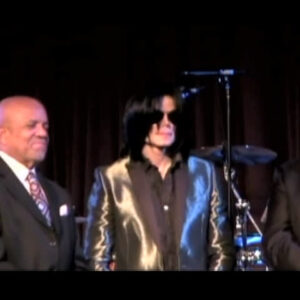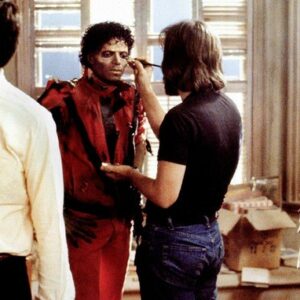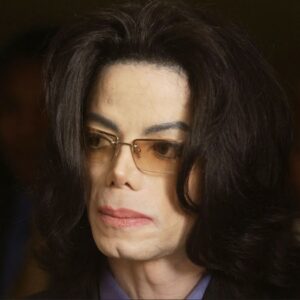Introduction
Bruce Willis, a household name synonymous with action, heroism, and charisma, has become more than just a movie star. Known for his iconic roles in blockbuster films like Die Hard, Pulp Fiction, and The Fifth Element, Willis has built a legacy not only as an actor but also as an enduring figure in the advertising industry. The transition from the big screen to commercials may seem like a downgrade for some, but for Bruce Willis, it’s another platform where his rugged, no-nonsense persona shines—and where his influence is just as potent.
Willis’s foray into advertising isn’t just about endorsing products for a paycheck; it’s about enhancing brand narratives, contributing creatively, and helping companies connect with a broad audience. Over the years, Bruce Willis has become a symbol of how celebrity endorsement—when done right—can transcend the confines of marketing and become a cultural moment.
Bruce Willis: The Unlikely Advertising Icon
Celebrity endorsements have been part of marketing for decades, but only a few stars have been able to consistently resonate with the public. Bruce Willis is among this elite group, and his success in advertising can be attributed to his image and the qualities that audiences associate with him. Willis’s persona—tough, independent, cool under pressure, yet still approachable—makes him a perfect fit for brands seeking to convey strength, reliability, and authenticity.
Unlike other Hollywood figures whose transition into advertising might feel forced, Willis’s presence in commercials feels natural. His endorsement doesn’t come off as just another celebrity lending their name to a product; it feels like an extension of his on-screen characters. Whether he’s endorsing a luxury car or an everyday consumer product, his approach remains consistent: understated yet powerful, lending credibility to whatever brand he aligns himself with.
The Brand Ambassador Role
Willis’s roles in various commercials over the years demonstrate how effective a well-aligned celebrity can be for a brand. Take, for example, his partnership with the French car manufacturer Peugeot. In one memorable campaign, Willis reprised his Die Hard persona, bringing the same level of intensity and determination to a 30-second commercial as he would to a feature film. His endorsement gave Peugeot the kind of credibility and swagger that few brands could achieve on their own.
This commercial was particularly notable because it wasn’t just about selling a car—it was about selling a lifestyle. Willis represented a kind of rugged individualism that Peugeot wanted to associate with its vehicles. His involvement didn’t just elevate the brand; it created an emotional connection with consumers who saw him as a representation of their aspirations for adventure, freedom, and reliability.
Similarly, his work with brands like Sobieski Vodka reinforced the idea that Willis doesn’t endorse products that don’t align with his own ethos. He’s famously said that he prefers Sobieski because it’s “the real deal,” a line that reflects his own no-nonsense image. The commercial’s message wasn’t just about the product—it was about authenticity, a value that Bruce Willis personifies both on and off-screen.
The Creative Process: Willis as a Collaborator
One of the reasons Willis has been so successful in advertising is his hands-on approach to the creative process. It’s not enough for him to just show up, recite a few lines, and collect a paycheck. Willis takes an active role in shaping the commercials he appears in, ensuring that they align with his own brand and the message the company wants to convey.
This creative collaboration often begins long before the cameras start rolling. Marketing teams and directors consult with Willis on everything from the script to the tone of the commercial, ensuring that his persona shines through in a way that feels authentic. This level of involvement is rare in the world of celebrity endorsements, where stars often take a more passive role. However, for Bruce Willis, it’s a key reason why his commercials are so memorable.
Take his commercials for the U.S. brand Seagram’s. In the 1990s, Willis wasn’t just the face of the brand—he helped shape its entire advertising campaign. From the catchy, bluesy music to the casual, fun-loving persona Willis projected, the ads were a reflection of his own laid-back charm. The campaign was wildly successful, and it demonstrated how Willis’s personal touch could elevate a brand’s image from mundane to iconic.
Another example of Willis’s creative input can be seen in his collaboration with Paribas, a global banking company. In this campaign, Willis played a version of himself that was simultaneously tough and relatable, embodying the message of trust and reliability that Paribas wanted to project. His involvement in shaping the character—down to the way he delivered his lines—showed how his on-screen skills could seamlessly translate into the world of advertising.
Global Appeal and Versatility
A crucial factor in Willis’s advertising success is his global appeal. Unlike some celebrities whose recognition may be limited to specific regions, Willis is universally known and admired. His iconic status transcends cultural and linguistic barriers, making him an ideal brand ambassador for companies looking to reach a global audience. His face, voice, and persona are instantly recognizable, whether you’re in New York, Paris, or Tokyo.
His ability to connect with a wide range of demographics—from blue-collar workers who relate to his everyman charm to affluent audiences who appreciate his rugged sophistication—means that he can effectively endorse a wide range of products. This versatility has made him a valuable asset to brands across various industries.
For example, his commercials for Daihatsu—a popular car manufacturer in Japan—showed how Willis’s persona could be tailored to different cultural contexts without losing its essence. In these ads, he retained his tough-guy image while adapting it to the subtleties of Japanese humor and sensibilities. The result was a campaign that felt both familiar and fresh, appealing to Japanese consumers while staying true to the Bruce Willis brand.
Bruce Willis and the Evolution of Celebrity Endorsements
Bruce Willis’s advertising career highlights a broader shift in how brands utilize celebrity endorsements. Gone are the days when simply attaching a famous face to a product was enough to guarantee success. Today’s consumers are more discerning, and they demand authenticity from the celebrities who endorse products. This is where Willis excels—his endorsements don’t feel like shallow cash grabs. Instead, they feel like genuine extensions of his persona.
His work in advertising has also helped to blur the lines between entertainment and marketing. Willis’s commercials often feel more like mini-films than traditional ads, with carefully crafted narratives and high production values. This cinematic approach reflects a larger trend in the industry, where brands are increasingly looking to create content that resonates on an emotional level, rather than just selling a product.
The longevity of Willis’s career in both film and advertising is a testament to his ability to stay relevant in an ever-changing landscape. As the advertising industry continues to evolve, with brands exploring new creative strategies and platforms, Willis’s approach to commercial appearances remains a blueprint for how to do celebrity endorsements right.
Conclusion: The Enduring Legacy of Bruce Willis in Advertising
Bruce Willis’s impact on the advertising world goes far beyond his role as a brand ambassador. He’s redefined what it means to be a celebrity in commercials, bringing the same level of dedication and creativity to his advertising work as he does to his films. His involvement in the creative process, his ability to connect with a global audience, and his consistent portrayal of authenticity make him a unique figure in the world of marketing.
Willis’s career in advertising offers valuable lessons for both brands and celebrities. For brands, it shows the importance of finding the right ambassador—someone whose persona aligns with the values and message you want to convey. For celebrities, it demonstrates the potential for advertising to be more than just a side gig; it can be a powerful platform for extending one’s personal brand.
As Bruce Willis continues to balance his acting career with his advertising work, one thing is clear: he’s not just selling products—he’s selling stories, emotions, and a way of life. And in doing so, he’s solidified his place as one of the most iconic and influential figures in both Hollywood and the world of advertising.





